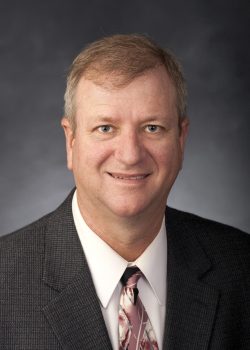It’s been a pleasure over the last 6 years to attend the Annual Meetings of SRM, both at the National/International and State Section meetings and field days. I’ve learned a great amount about issues and problems encountered on rangelands and their management. However, I am most impressed by the creative solutions that are being developed through research and by savvy managers on the ground. At the Utah Section Meeting held in early November, the focus was on Collaborative Resource Management Efforts that bring together stake holders from interests across the board to generate plans that achieve activities, restorations and management, that built by consensus, can overcome the bitterness of conflict that often lead to litigation. At the Colorado section meeting a year ago they focused on restoration efforts, and I was truly impressed by the variety of novel approaches and the successes reported.
At each of our state and international meetings we have had similar experiences. I’ve been impressed as I watched these presentations, and I often find myself wishing that my colleagues were with me; or that people at the state, region or national offices were there to see it. Perhaps even more critical, would be the inclusion of representatives from organizations that are so often critical of managers and land management. Even the public-at-large could appreciate the changes that occur over time as a result of management and improvement practices. In the American West, where there is a large amount of public land, managers and ranchers often work in concert to achieve better conditions and heathier rangelands. But I have also been on private deeded-land ranches where the same kinds of investment and conscientious management has led to amazing results on the land which increased forage availability, habitat improvement, watershed health and even recreational opportunities.
The saddest part of my experience is the age-old problem that SRM has had of “preaching to the choir.” Truly, we enjoy and revel in each other’s success, but publicly we are often known best for occasions when people are unhappy with what they perceive as problem on rangelands. Admittedly, there are still areas that get overgrazed, prescribed fires that escape their prescription, recreational use that leaves scaring on the land, and erosion that could occur from these and other causes. While managers grapple with these issues and battle on litigious fronts with single-minded interest groups, they are also doing incredible things on the ground to improve rangelands and make them more productive for many uses and users.

Val Anderson
Photo by Kirsten Burner/BYU
© BYU PHOTO 2010
I am urging our membership to become proactive in sharing our many successes. Our outlet opportunities used to be limited to newspapers, journals and the occasional news cast, but now there is almost unlimited opportunities to share. Many of us are old-school, having not grown up in the computer age, let alone the world of internet, email, Facebook, YouTube, Twitter and an ever increasing technologic storm. Still, we have all taken photos of our work, written summary report of projects, given presentations and spoken to others about our successes. While there is much we can do independently, SRM has technical staff that can help each of us share these rangeland success stories. We need you to help us get the material. If you would send in short summaries with photos of your projects, successes and improvements, SRM will find appropriate outlets to tell the story. We can still publish in Rangelands and REM, but these days, my kids click on the internet and pull up all kinds of information from all of the public media connectivity. While much of it is not truth tested, today’s generation finds information that way and SRM’s message needs to be out there and available. I hope the public relations committees at the section levels take up this challenge along with every SRM member. Using a now familiar slogan, “Let’s Make Rangelands Great Again!!”
